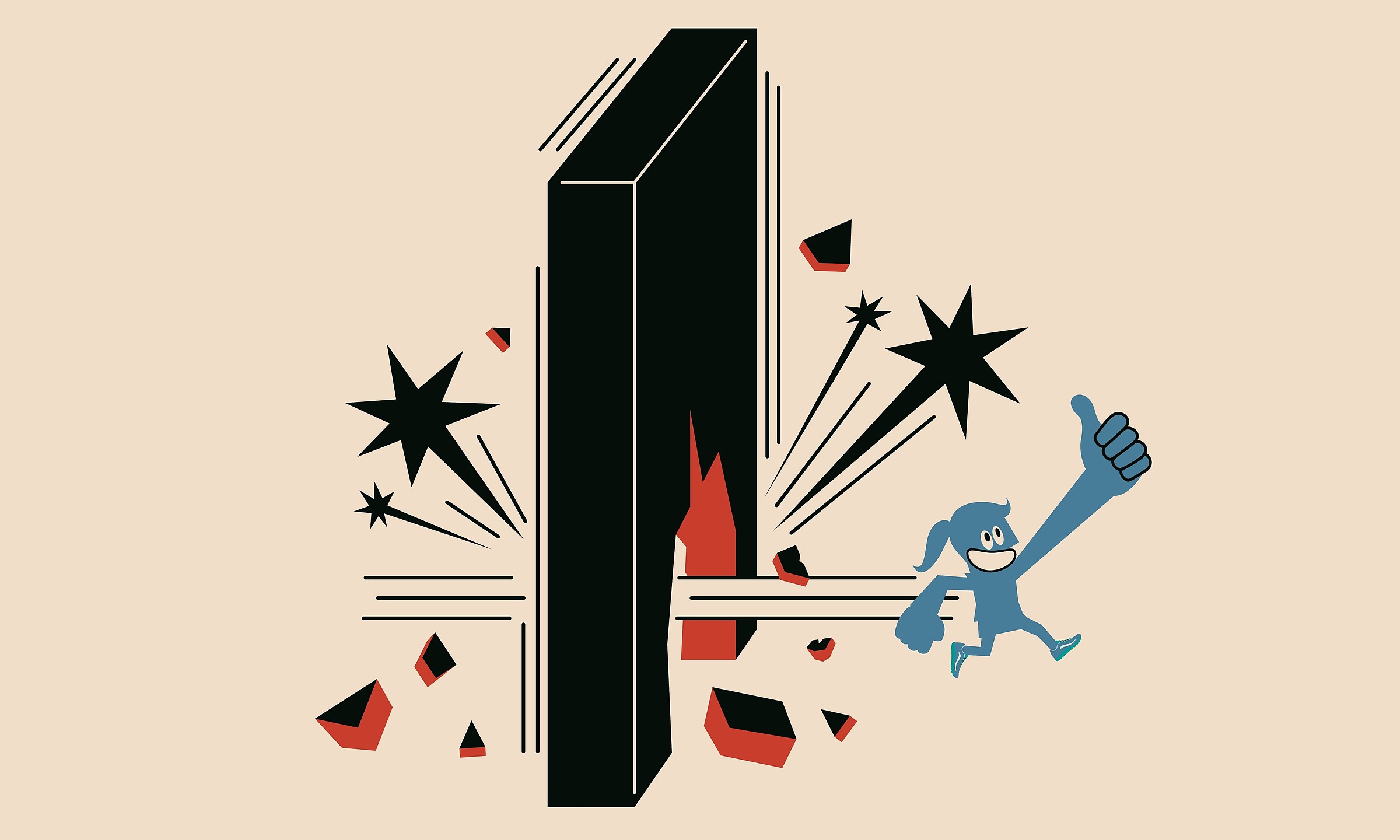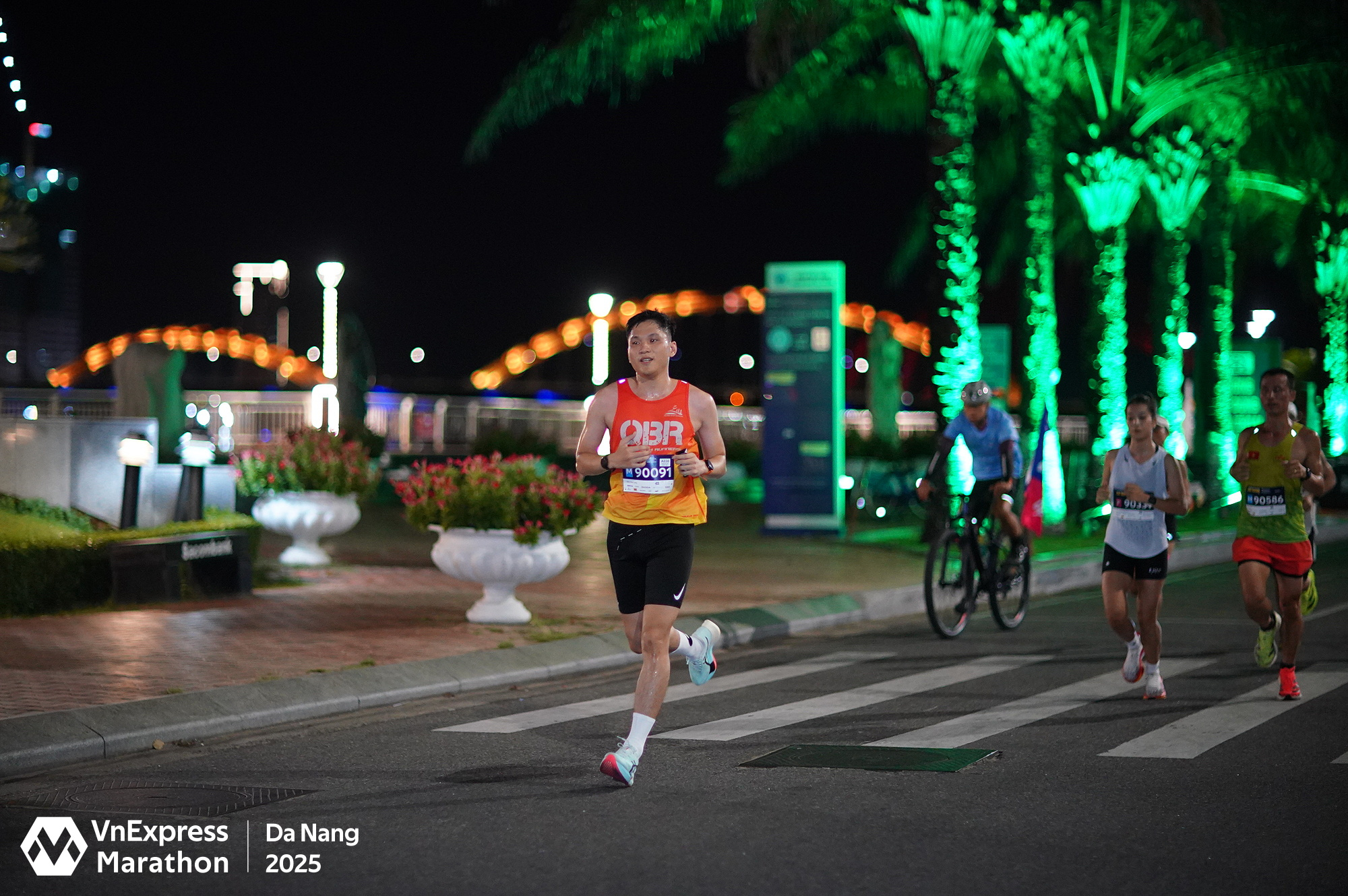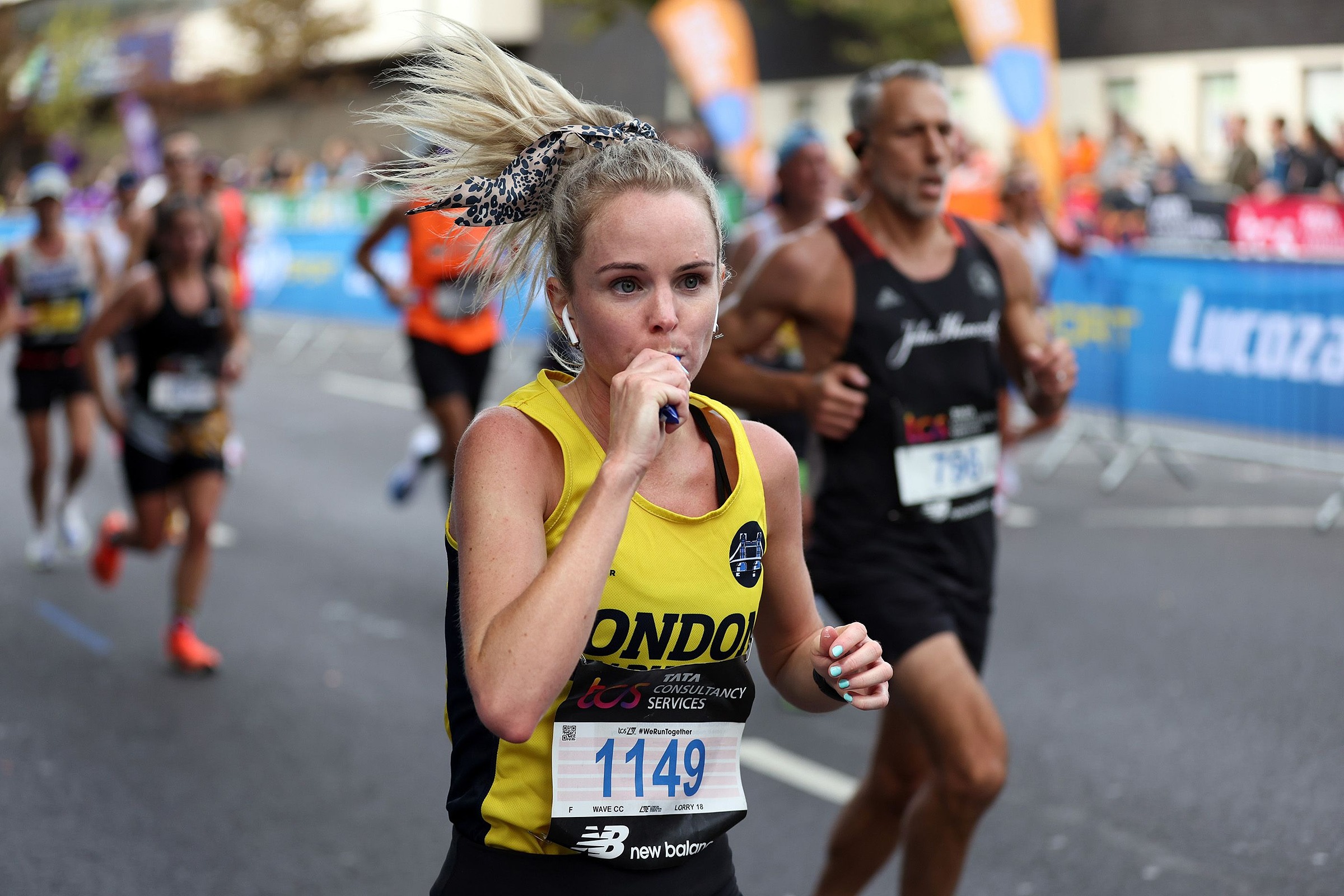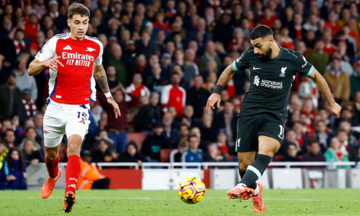Between 1.1 and 1.3 million people worldwide complete marathons annually. Many "crawl" to the finish line, exhausted, or even give up (DNF) when their legs fail, their heads spin, and they lose consciousness and bodily control. Even professionals experience this, like Pham Huynh Yen Thu, a young athlete from Dak Lak, in the final meters of the VnExpress Marathon Da Nang on 20/7.
This phenomenon is called "hitting the wall." It's the sudden feeling of exhaustion, an inability to maintain pace, sometimes requiring rest or walking, as if an invisible wall prevents forward progress. It typically occurs between kilometers 30 and 35, or in the final kilometers of the 42.195 km course.
According to Outside magazine, even at the Boston Marathon, where runners are experienced, the "hitting the wall" rate is around 30%. In Singapore, with its hot and humid climate, 78% of runners experience it to varying degrees.
Two primary factors contribute to this. Firstly, "hitting the wall" signifies depleted carbohydrate stores in leg muscles and the liver, stored as glycogen. During running, glycogen converts to glucose, the primary energy source for muscles. Secondly, and more commonly, insufficient training leaves legs too weak to endure the intense exertion of a 42 km run.
To avoid this and break through any "walls," runners can follow these tips from top running coaches.
Adequate training is crucial. Marathons are tougher than inexperienced runners imagine, as evidenced by the "hitting the wall" rate at the Singapore Marathon. Running 20 to 30 km weekly while aiming for a strong finish is nearly impossible. Excluding walking or crawling to the finish in 5-6 hours, consistent running during the race requires at least 50-60 km of weekly training.
Improving performance necessitates increased training, potentially up to 80 or even 100 km per week. According to Greg McMillan, sports physiologist, running coach, and author of "You (Only Faster)", long runs are most important. He recommends at least two or three 30-35 km long runs during marathon training to simulate race-day fatigue and mitigate the risk of "hitting the wall."
 |
Sufficient training and endurance building are key to breaking through the invisible "wall" at the end of a marathon. Photo: Runner's World |
Realistic goal setting is essential. Develop a race strategy with realistic goals, specifically two paces: a potential pace and a target pace. Your "potential pace" is your training pace.
Patrick McCrann, running coach and renowned runner, once said, "Under ideal conditions – downhill with a tailwind, and fully tapered, I could run a sub3:30 marathon." While ideal, this formula relies on too many perfect elements. As we know, anything can happen on race day, making perfection unlikely.
A smart start is key. A marathon is often described as 32 km of hope and 10 km of reality. A good strategy for the first 8 km can help prevent "hitting the wall." Many runners exceed their capabilities in these initial kilometers due to excitement, adrenaline, rested legs from tapering, and the crowded course.
Hal Higdon, veteran marathon coach and author of popular marathon training plans, emphasizes that an overly enthusiastic start depletes glycogen quickly, increasing the risk of "hitting the wall." He champions the phrase: "Start slow, finish strong."
Run the first 8 km about 10 seconds per km slower than your target pace. If aiming for a 5:00/km average, start at 5:10/km. Any pace slower than 5:00 is a bonus, conserving energy.
 |
A runner starts in the leading group of the 42km VnExpress Marathon Da Nang on 20/7. Photo: VnExpress Marathon |
Boosting blood sugar is important. Don't wait until the race ends to address exhaustion or a dropping pace. Consider your fuel. It could be an energy gel, jelly beans, or even caffeine, if you've trained with it. Have these readily available near the end of the race.
Matt Fitzgerald, author of "The New Rules of Marathon and Half-Marathon Nutrition," recommends practicing carb intake during long runs. He suggests 30-60g of carbs per hour, starting at km 5-10, to maintain glycogen levels.
Running technique can make a difference. As legs tire and speed decreases, helplessness can overwhelm runners. Aiming for a 5:17/km pace but only managing 5:24/km can be demoralizing. When running at your limit, focus on controllable aspects, like technique. Improving form can yield better results kilometer by kilometer. According to coach Pham Minh Quang from the BoiDapChay club, focus on high hand carriage, relaxed shoulders, increased leg turnover, leaning forward, a good posture with chin up, and pushing off with your toes.
Defining your mission and goals is crucial. Overcoming "the wall" often requires more than just physical strength and consistent fueling. It's a conversation between your body and brain. Your body complains about the exertion, the limited fuel, and the desire to quit.
 |
Nutritional supplements and mental fortitude, focusing on race goals and training efforts, can help overcome "hitting the wall." Photo: Runner's World |
Prepare for this mental challenge by having a higher purpose or goal. It might be finishing within a certain time, visualizing the finish line, or a personal promise. Whatever motivated you through training, use it now to break down the "wall."
For some, "hitting the wall" means stopping to walk. However, running is still possible, albeit at a reduced pace. Refuel with gels or bananas at aid stations, and consider short walks to allow your body to recover. The most important factor is the will to continue. Giving up ends the race. Persistence allows you to keep moving forward, even if the finish isn't as glorious as envisioned.
Minh Quang












